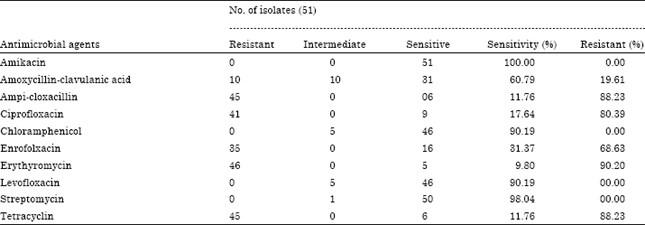Research Article
Prevalence and Antibiogram of Campylobacter Infections in Dogs of Mathura, India
Department of Veterinary Clinical Medicine, College of Veterinary and Animal Husbandry, Pandit Deen Dayal Upadhayay Pashu Chikitsa Vigyan Vishvidhyalaya Evum Go-Anusandhan Sansthan (DUVASU), Mathura, Uttar Pradesh, 281001, India
A.K. Verma
Department of Veterinary Clinical Medicine, College of Veterinary and Animal Husbandry, Pandit Deen Dayal Upadhayay Pashu Chikitsa Vigyan Vishvidhyalaya Evum Go-Anusandhan Sansthan (DUVASU), Mathura, Uttar Pradesh, 281001, India
Amit Kumar
Department of Veterinary Clinical Medicine, College of Veterinary and Animal Husbandry, Pandit Deen Dayal Upadhayay Pashu Chikitsa Vigyan Vishvidhyalaya Evum Go-Anusandhan Sansthan (DUVASU), Mathura, Uttar Pradesh, 281001, India
Mukesh Srivastava
Department of Veterinary Clinical Medicine, College of Veterinary and Animal Husbandry, Pandit Deen Dayal Upadhayay Pashu Chikitsa Vigyan Vishvidhyalaya Evum Go-Anusandhan Sansthan (DUVASU), Mathura, Uttar Pradesh, 281001, India
H.P. Lal
Department of Veterinary Clinical Medicine, College of Veterinary and Animal Husbandry, Pandit Deen Dayal Upadhayay Pashu Chikitsa Vigyan Vishvidhyalaya Evum Go-Anusandhan Sansthan (DUVASU), Mathura, Uttar Pradesh, 281001, India









